![]()
![]()
![]()
Use LEFT and RIGHT arrow keys to navigate between flashcards;
Use UP and DOWN arrow keys to flip the card;
H to show hint;
A reads text to speech;
36 Cards in this Set
- Front
- Back
- 3rd side (hint)
|
DOT-406/MC-306 |
- Gasoline, Diesel fuels, liquid fuel products, alcohol - Flammable or combustible liquids - PSI 3 - 9,000 Gallons |
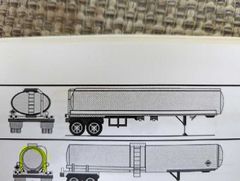
|
|
|
DOT-407/MC-307 |
- Flammable or combustible liquids, acids, caustics, poisonous liquids - PSI 40 - 6,000 Gallons |
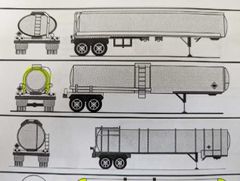
|
|
|
DOT-412/MC-312 |
- Strong corrosives, sulfuric acid or nitric acid, acids, bases, flammable liquids, poison liquids, oxidizing liquids - No pressurized gases - PSI 35 and 50 - 7,000 Gallons |
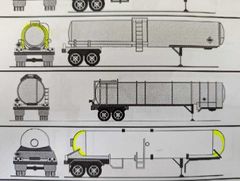
|
|
|
MC-331 |
- Gases liquified by pressure - Anhydrous ammonia, LPG, propane, butane - PSI 100 - 11,500 gallons - "Bobtail" MC-311- 3,500 psi |
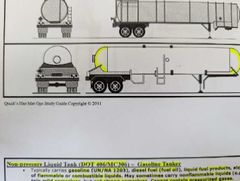
|
|
|
MC-338 |
-Gases liquified by refrigeration - Liquid oxygen, nitrogen, argon, carbon dioxide, hydrogen - (-150⁰ F) - 25 PSI - 7,000 Gallons |
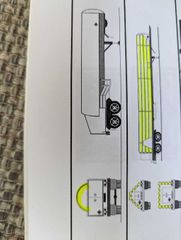
|
|
|
Tube Trailer |
- pressurized gases - air, helium, oxygen - up to 5,000 psi - 3,000 to 5,000 range |
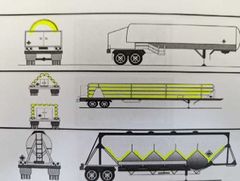
|
|
|
Dry Bulk Cargo tank truck |
- Dry Bulk - calcium carbide, oxidizers, corrosive solids, cement, plastic pellets, fertilizers - 22 psi |
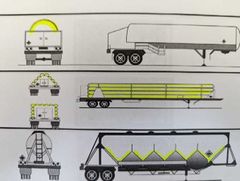
|
|
|
Box Trailer |
- Mixed cargo - bags, boxes, drums, tanks, cylinders - Presence of several placard holders, indicates that it commonly carries hazardous materials |
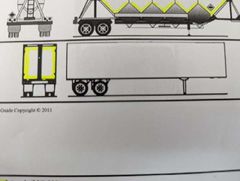
|
|
|
IM-101( Intermodal tank) |
- Hazardous and non hazardous liquids and solids - Toxic, corrosives, flammable materials - non-pressurized - 25.4 to 100 psig - 5,000 to 6,300 gallons |
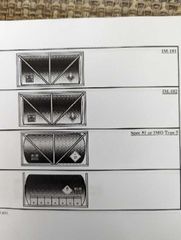
|
|
|
IM- 102 (Intermodal tank) |
- Hazardous and nonhazardous liquids and solids - non- regulated materials, food grade commodities - alcohols, some corrosives, pesticides, resins, solvents, flammable materials - 14.5 to 25.4 psig - 5,000 to 6,300 |
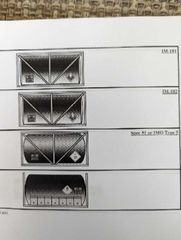
|
|
|
Spec 51 (Dot specification 50) |
- gases liquified by pressure - LPG ( liquified petroleum gas), ammonia - high vapor pressure - 100 to 500 psig - 50- 5,500 psig |
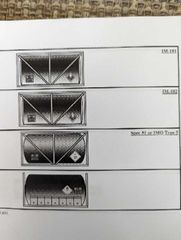
|
|
|
Cryogenic tank container |
- Gases liquified by refrigeration - argon, oxygen, helium - cryogenic gases, very low temperature gases |

|
|
|
Tube module |
- gases in high pressure cylinders - oxygen, nitrogen, helium, hydrogen - 3,000 to 5,000 psi |
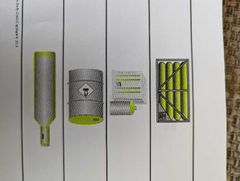
|
|
|
Portable tanks and bulk totes |
- flammable, combustible, toxic, corrosive liquids - non-hazardous materials - up to 550 gallons - common capacity 300 gallons - composed of ABS plastic, steel, aluminum, other materials |
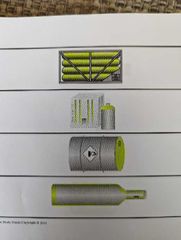
|
|
|
Drums |
- Variety of solids and unpressurized liquid hazardous materials - Unlined fiberboard: dry granular ( fertilizer, sawdust, grain) - Plastic lined fiberboard: wet materials (food, slurries) - Plastic: corrosive materials( sodium hydroxide, acids) combustible materials, foods - Steel: flammable and combustible materials (alcohols, fuel oils) mild corrosives, food liquids - Stainless steel: Strong corrosives and oleum - Aluminum: pesticides, materials that react with steel and plastic - 1 to 95 gallons/ typical is 55 gallons |
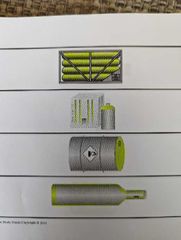
|
|
|
Cylinders |
- Store pressurized gases - chlorine, hydrogen - 1 pound to thousands of pounds - 200 to 5,000 psi |

|
|
|
Bottles |
- Glass, metal, plastic - hazardous liquids - ounce to a gallon |
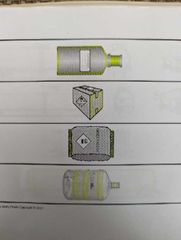
|
|
|
Cardboard boxes |
- Carry pesticides, household products, hazardous liquids in bottles |
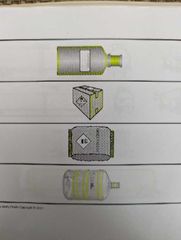
|
|
|
Bags |
- Can be paper, plastic, or fiber, reinforced or not - containers for chemicals, pesticides and food - large reinforced polypropylene bags called "supersacks" |
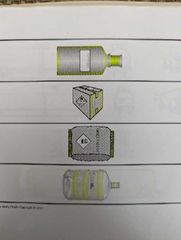
|
|
|
Carboy |
- Large glass or plastic bottle encased in basket or box primarily used to store corrosives materials - acids and bases - Deep rock water bottle |
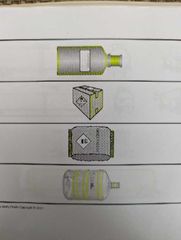
|
|
|
Pressurized tank car |
- pressurized flammable gases (propane, LPG) - poisonous gases (chlorine, sulfuric dioxide, vinyl chloride) - nonflammable gases (argon, carbon dioxide) - 33,500 gallons - 100 to 600 psi |
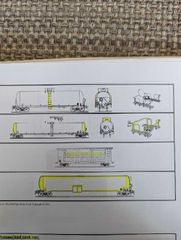
|
|
|
Non-pressurized (general service) |
- Chemicals such as combustible or flammable liquids ( gasoline, fuel oils) - corrosives, oxidizers, organic peroxides, slurries, poison, food liquids (juice, tomato paste, tallow) - 30,000 gallons - up to 100 psi - valves and fittings are exposed |
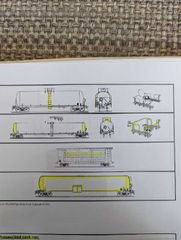
|
|
|
High pressure tuber car |
- gases such as (oxygen, helium, hydrogen, nitrogen) |
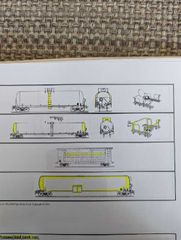
|
|
|
Cryogenic liquid tank car |
- gases liquified by refrigeration - liquid hydrogen, nitrogen - low as 25 PSI - temperature negative 130° f or below - test pressure 60 to 175 psi |

|
|
|
Hopper car |
- dry bolt chemicals - calcium carbide, sodium chloride, ammonium nitrate, lime, other dry chemicals - sand, gravel, fertilizers, plastic pellets - hopper cars may be covered or open top |
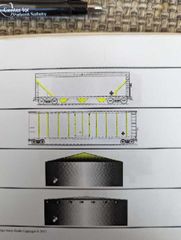
|
|
|
Box car |
- mixed cargo - packed in bags, boxes, drums, tanks, cylinders, liquid, bladders, other containers - car class AAR204XT is a box car carrying a cryogenic tank |
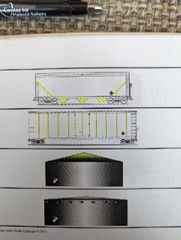
|
|
|
Cone roof tank (atmospheric or non-pressure) |
- Atmosphere tank: stored under atmospheric pressure - 0 to 1 PS. IG - low volatility liquids, fuel oils, diesels, heating oil - flammable, combustible, or corrosive - 300 ft in diameter and 64 ft high |

|
|
|
Covered top floating roof tank (Non-pressure) |
- stores flammable and combustible liquids - atmospheric pressure (0 to 1 PSIG) - internal roof floats on top of the liquid, roof protects tank contents from the elements |
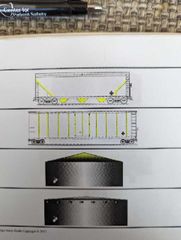
|
|
|
Covered top floating roof tank geodesic dome (non-pressure) |
- stores, gasoline and other volatile flammable liquids - stores at atmospheric pressure (0 to 1 PSIG) - internal roof floats on top of the liquid, additional domed roof protects contents from the elements |
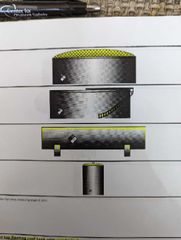
|
|
|
Open top floating roof tank (non-pressure) |
- stores, gasoline and other reality phone bill liquids - atmospheric pressure (0 to 1 PSIG) - tank is typically large |
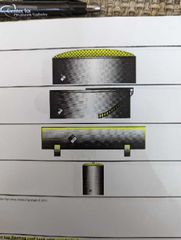
|
|
|
Horizontal cylindrical tank (non-pressure) |
- stores liquids of low volatility - fuel oils, diesel fuels, heating oils - atmospheric pressure ( 0 to 1 PSIG) - typically has dished ends and can be up to 12 ft in diameter and 60 ft long |

|
|
|
Dome roof tank (pressure tank) |
- Stores flammable or combustible, volatile liquids, gasoline, liquid fertilizers, solvents - content stored at low pressure ( 0.5 to 15 PSIG) |
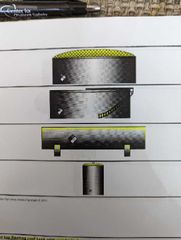
|
|
|
Hemispheroid tank |
- stores volatile liquids such as gasoline - content stored at low pressure (0.5 to 15 PSIG) |
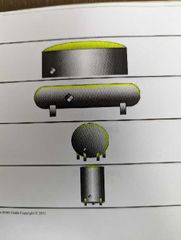
|
|
|
High pressure horizontal tank ("bullet") |
- Stores gases liquefied by pressure - LNG ( liquefied natural gas) , LPG (liquefied petroleum gas), propane, butane, hydrogen, ammonia - may store volatile flammable liquid - Will not contain low volatility liquids - high pressure (above 15 PSIG) |
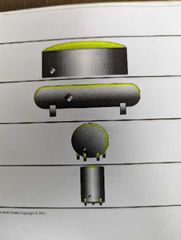
|
|
|
High pressure spherical tank |
- stores gases liquefied by pressure - LNG (liquefied natural gas), LPG (liquefied petroleum gas), may contain ammonia, propane, butane, hydrogen - stored at high pressure ( above 15 psig) |
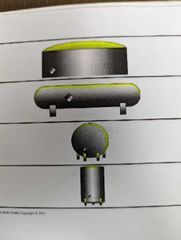
|
|
|
Cryogenic liquid tank |
- stores liquid nitrogen, oxygen, carbon dioxide, argon, other cryogenic gases - tank is heavily insulated - low pressure normally vents some vapor |
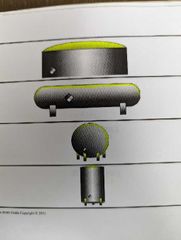
|

